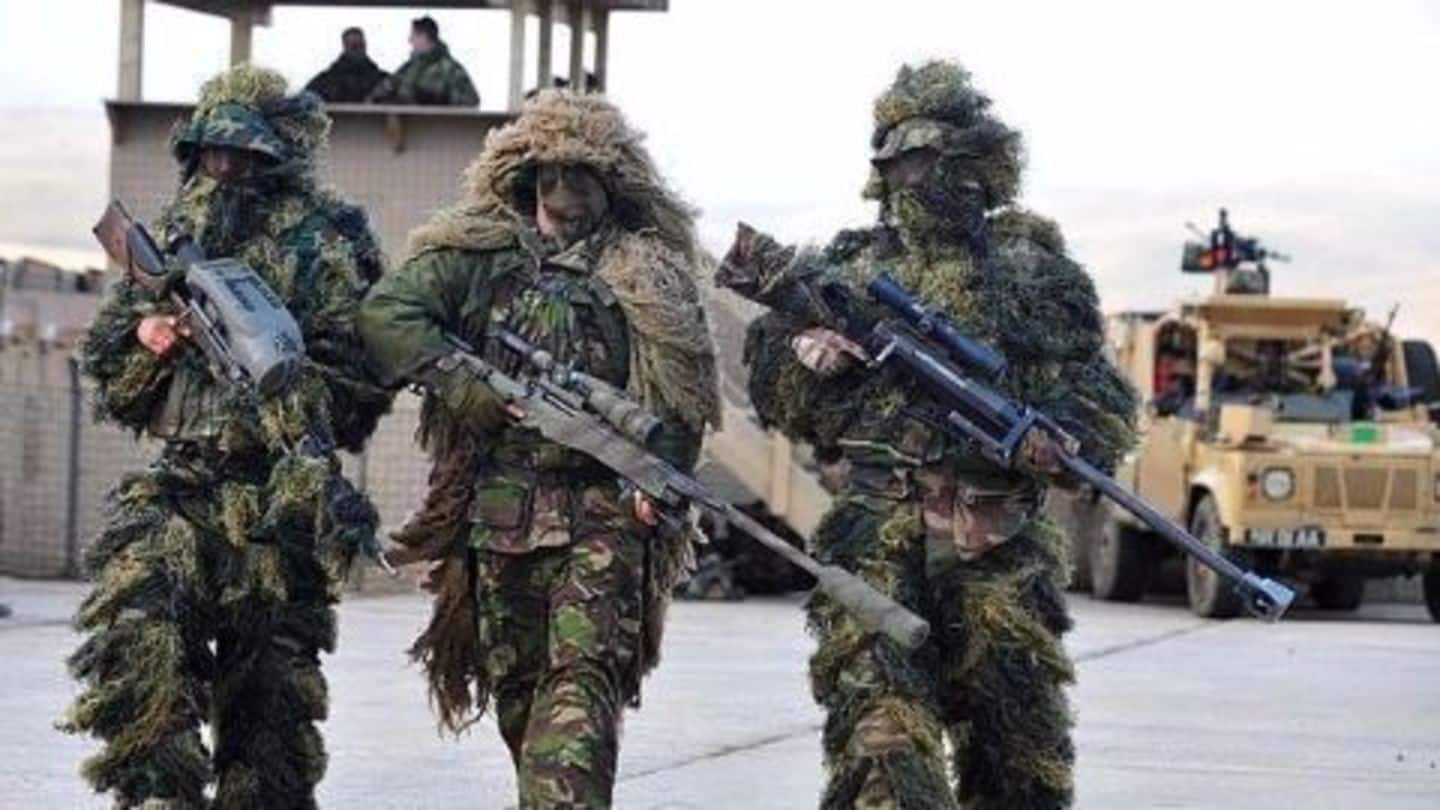
British troops test Harry Potter-style invisibility cloak
What's the story
During trials conducted at Fort Benning in Georgia in the USA, British troops from 3rd Battalion-The Rifles tested a Harry Potter-style "invisibility cloak", manufactured by VATEC Concealment Systems. It proved successful in concealing the soldiers in the field trials - both from human eyes and the latest infrared trackers and heat-seeking devices. The hi-tech camouflage sheeting can be moulded to match different terrains.
Origin
MIT and University of Illinois develop invisibility cloak
Researchers from the University of Illinois and the Massachusetts Institute of Technology first developed the remarkable cloaking technology. Xuanhe Zao, an engineering professor at MIT, said, "At the moment the military spends millions of dollars developing new camouflage patterns but they're all static right now, they don't change." "Dynamic camouflage would allow soldiers and their vehicles to adapt to their surroundings instantly", he added.
Do you know?
The first 'invisibility cloak'
In October 2006, researchers from Duke University announced the world's first invisibility cloak which used man-made "metamaterials" to "wrap" electromagnetic waves around a region, thus concealing the same. However, the cloak only worked in two dimensions and with microwaves.
Technology
How does the invisibility cloak work?
The invisibility cloak replicates a cephalopod's (like squids and octopuses) ability to change colour and blend in with their environments. Scientists created an artificial material whose bottom layer contained thousands of tiny light-sensitive cells that could detect surrounding colours. Electrical signals then triggered the top layer to imitate the colours detected rendering the wearer virtually invisible. The colour change takes 2-3 seconds.
Legality
Would invisibility cloaks breach the Geneva Conventions?
Bill Boothby, an ex-air commodore and author, believes that dynamic camouflage systems could breach the Geneva Conventions - the universally agreed rules of armed conflict. Boothby previously worked as the Deputy Director of the UK's Royal Air Force legal services. He explained, "A combatant whose weapon is rendered invisible by its coating is arguably not complying with the minimal requirements [of the Geneva Conventions]."
Quote
An 'absolutely brilliant' invention
Corporal Tyrone Hoole, a sniper from the 3rd Battalion the Rifles, on testing the invisibility cloak, said, "This is an absolutely brilliant piece of kit. The lads are desperate for the Army to buy it."